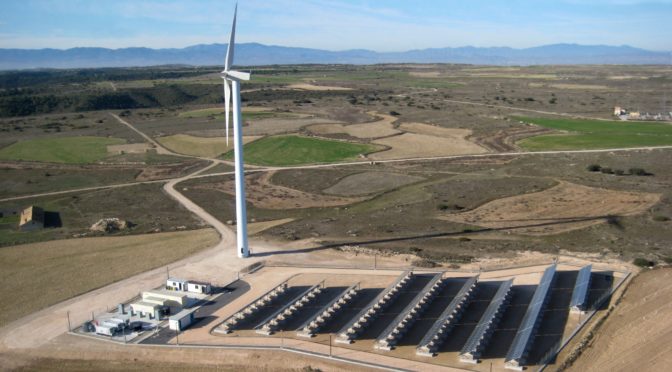India’s total wind-solar hybrid capacity is expected to grow rapidly to reach nearly 11.7 gigawatts (GW) by 2023, according to a new report by IEEFA and JMK Research.
“This is a new and fast-growing market in India,” say the report’s authors Vibhuti Garg, energy economist at the Institute for Energy Economics and Financial Analysis (IEEFA), and Jyoti Gulia, founder of JMK Research.
“There is a lot of interest in the potential of wind-solar hybrid generation to better manage the intermittency problem of standalone wind and solar and to make clean power more competitive against traditional thermal plants,” says Garg.
“Wind-solar hybrid systems can produce more consistent power because solar power is produced during the day, while wind power is typically strongest at night. This inherent complementary nature of wind and solar power makes hybrid systems well-suited to meet energy demand.”
As the Solar Energy Corporation of India (SECI) and several State governments continue to provide incentives to promote the building of new wind-solar hybrid projects, Garg and Gulia predict that total capacity, which is now only 148 megawatts (MW), will increase by almost 80 times in the next three years.
Energy auctions
“The government is planning to hold renewable energy auctions for round-the-clock and hybrid projects instead of plain solar or wind tenders. Based on the tenders allotted under various central and state schemes, we expect capacity addition of wind-solar hybrid projects to reach almost 11.7GW in the next three years, reflecting a compound annual growth rate of 223 per cent from 2020-23.”
SECI tenders for wind-solar hybrid projects without storage have attracted low tariffs of ?2.67/kWh which are comparable to plain solar tariffs.
The report uses a financial model to project tariffs trends for a 250MW wind-solar hybrid project under different scenarios. It shows that when solar and wind are blended at a ratio of 80:20, the levelised tariff is ?2.49/kWh, while a ratio of 50:50 results in a tariff of about ?2.57/kWh (US¢3.43/kWh).
But when storage in the form of a two-hour battery back-up is added, the levelised tariff increases substantially to ?4.59/kWh.
Clearly, adding battery storage is not a feasible option at present because it significantly increases project costs and hence the tariffs. However, rapidly falling battery prices will make such an addition to these projects viable within a few years, further strengthening grid stability and reliability.
Challenges faced
Developers in the wind-solar hybrid market are grappling with issues such as lower tariffs, policy uncertainty, land constraints, integration challenges, system sizing and lack of experience.
“Gujarat, Andhra Pradesh and Rajasthan have come up with their own wind-solar hybrid policies aligned with the National Wind-Solar Hybrid Policy, and more states should follow their example. States can reserve a certain percentage of their renewable targets for wind-solar hybrid, along with offering waivers and incentives designed to help grow the market.”
Much of India’s solar and wind power potential is concentrated in Gujarat, Tamil Nadu, Karnataka, Maharashtra and Rajasthan.
Although wind and solar capacity can be at the same or different locations, co-locating reduces costs related to land, grid connection, hardware and other installation overheads. The cost of a co-located system is 7-8 per cent lower than the cost of a standalone solar system.



